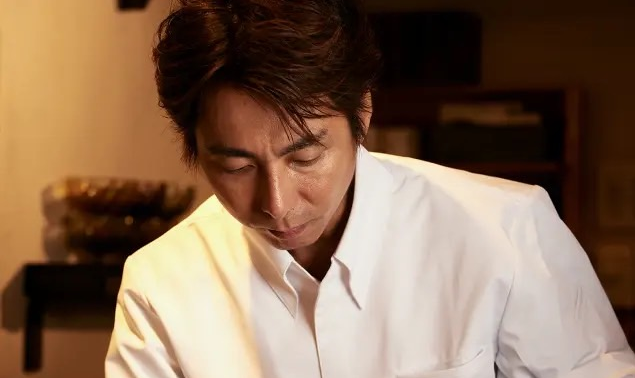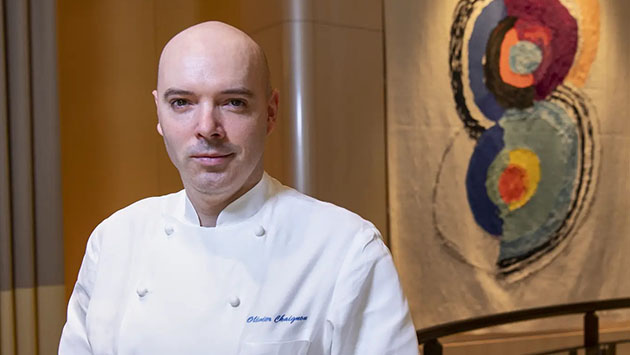Yoko Kurihara & Hiroshi Ishibashi
Art Dealer Fuji Torii
Fuji Torii, located in Omotesando, Tokyo, was founded in 1949 in Harajuku. Its mission is to promote Japanese art and culture domestically and internationally. Mrs. Kurihara and Mr. Ishibashi, the company’s managing directors, welcomed us at the company’s shop. Akaito commissioned Fuji Torii, which has a long-standing friendship with the Akaito’s chairman and co-founder, Dr. Mark Lee Ford, to create unique objet d’art on themes having to do with the history and culture of saffron in Japan. We spoke to Mrs. Kurihara and Mr. Ishibashi about how they came to be involved in artwork at Fuji Torii and about the future. (Akaito Limited, Yukina Owashi)
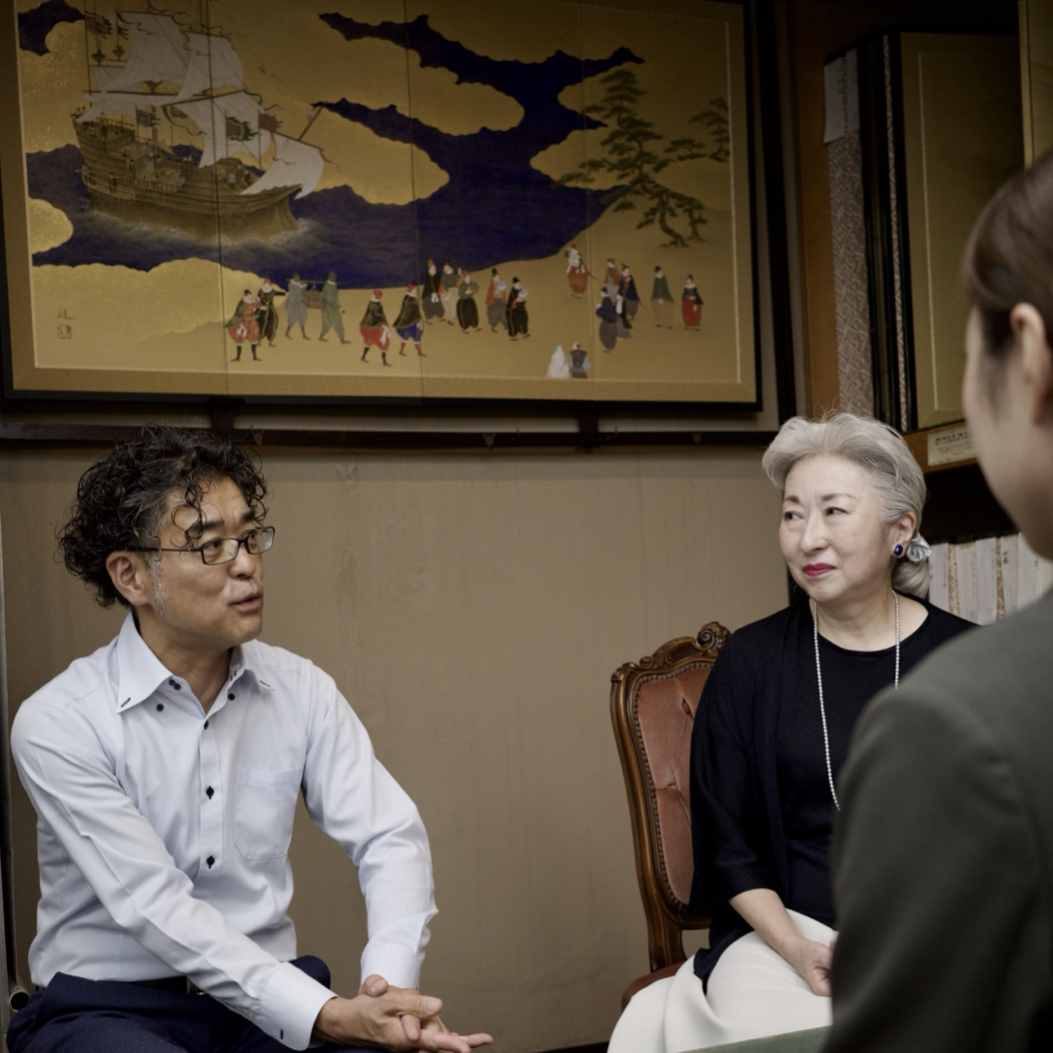
Mrs. Yoko Kurihara, President
Born in Ebisu, Tokyo, Mrs. Kurihara — inspired by her mother — grew up learning the Japanese tea ceremony. Later, Mrs. Kurihara met her husband, who was at that time the owner of Fuji Torii, and entered the world of art. The shop, however, was the family business of her husband’s line so there was not much occasion for her to get involved in the business directly in those days. The situation changed 12 years ago when her husband passed away at the age of 55. Mrs. Kurihara suddenly had to take over the responsibility of running Fuji Torii. It was not an easy decision, but in the end she decided to take over the business, and thought “I will take care of the business until my daughter is a little older and can decide what to do with the place.” With a soft smile, Mrs. Kurihara said that decision has led to Fuji Torii today.
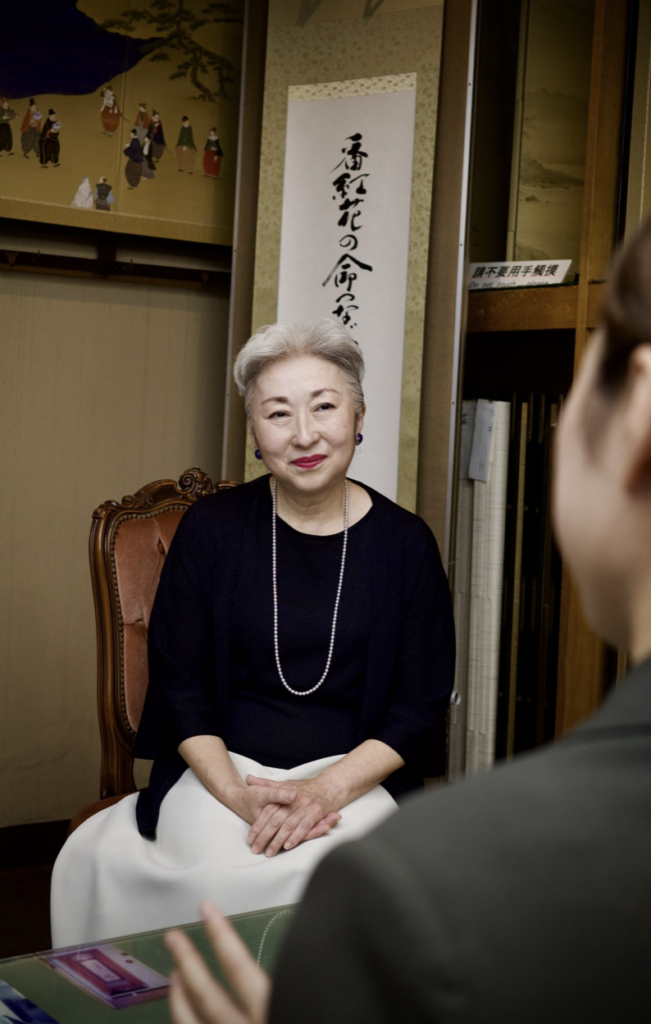
Mr. Hiroshi Ishibashi, Director
Born in Tokyo, Mr. Hiroshi Ishibashi joined Fuji Torii by chance. He had not planned to enter the art industry so, starting without any prior knowledge of art, he learned the depth of art entirely from his experiences at Fuji Torii. It is not hard to imagine how challenging it must have been, but Mr. Ishibashi says, “It has been an enjoyable professional journey.” The career as an art dealer is perfectly suited for him.


As with all the pieces having to do with Japanese saffron in The Akaito Art Collection, this is the only piece of its kind in existence.
Kutani ware (九谷焼) is a style of Japanese porcelain traditionally said to be from Kutani, now a part of Kaga, Ishikawa, in the former Kaga Province. It is divided into two phases: Ko-Kutani (old Kutani), from the 17th and early 18th centuries, and Saikō-Kutani from the revived production in the 19th century. Kutani ware, especially in the Ko-Kutani period, is marked by vivid dark colors that epitomize lavish aesthetics. The classical five colours style, known as gosai-de (五彩手), includes green, blue, yellow, purple, and red. The designs are bold and normally depict landscapes, the beauty of nature, and people, and cover most of the surface of each piece.
Crimson, purple, and green are colors characteristic of Japanese saffron. Because of this, and being mindful that the value of saffron is comparable to gold, Yoshiaki Yamada used two contrasting styles from the six over-glazing techniques in the revised form of kutani: Yoshidaya style, marked by the colours of green, yellow, purple and dark blue as the basis; and Eiraku style, with its simplistic coatings of gold on the first coat of red colour. The full-color flower in the center, and the three buds situated on alternating vertices of the hexagon, are in the Yoshidaya style. The background of Tyrian purple petals and verdant leaves contrast with the vivid crimson stigmas and yellow anthers. Petals and buds exhibit the Japanese saffron flower’s characteristic gradation from a light pastel shade of lilac to a darker and more striated mauve. Three pairs of saffron flowers in full bloom situated on the remaining vertices are portrayed in the Eiraku style, that is, painted with gold on crimson.
Conveying the essence of art
Fuji Torii places great importance on assessing the value of artwork and sharing this information with clients. For Mrs. Kurihara and Mr. Ishibashi, a good work of art is not only based on the financial value, but also on having history, technique and the feelings of its creator and previous owner woven into it. They believe that their mission is to understand all of this, convey it to their clients, and to help their clients to understand it. Valuing both the history of the artwork and the sensibilities of the client, and carefully enhancing the artwork, are among the differentiators of Fuji Torii.
Mrs. Kurihara and Mr. Ishibashi reflected on the importance of the physical handling of artwork as custodians of historical legacies. The careful handling of the items may seem mechanical—not so to Fuji Torii. As the late Mr. Kurihara implored: ”It is inevitable that something will break one day, and so ends the history of the artwork, which was passed from the past to today.”
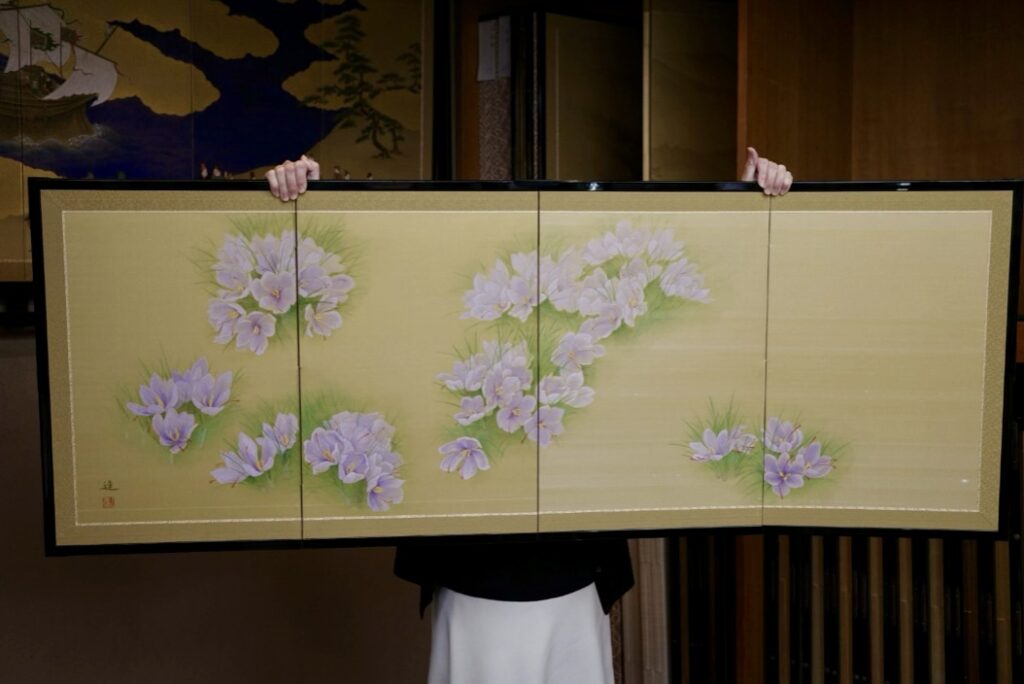
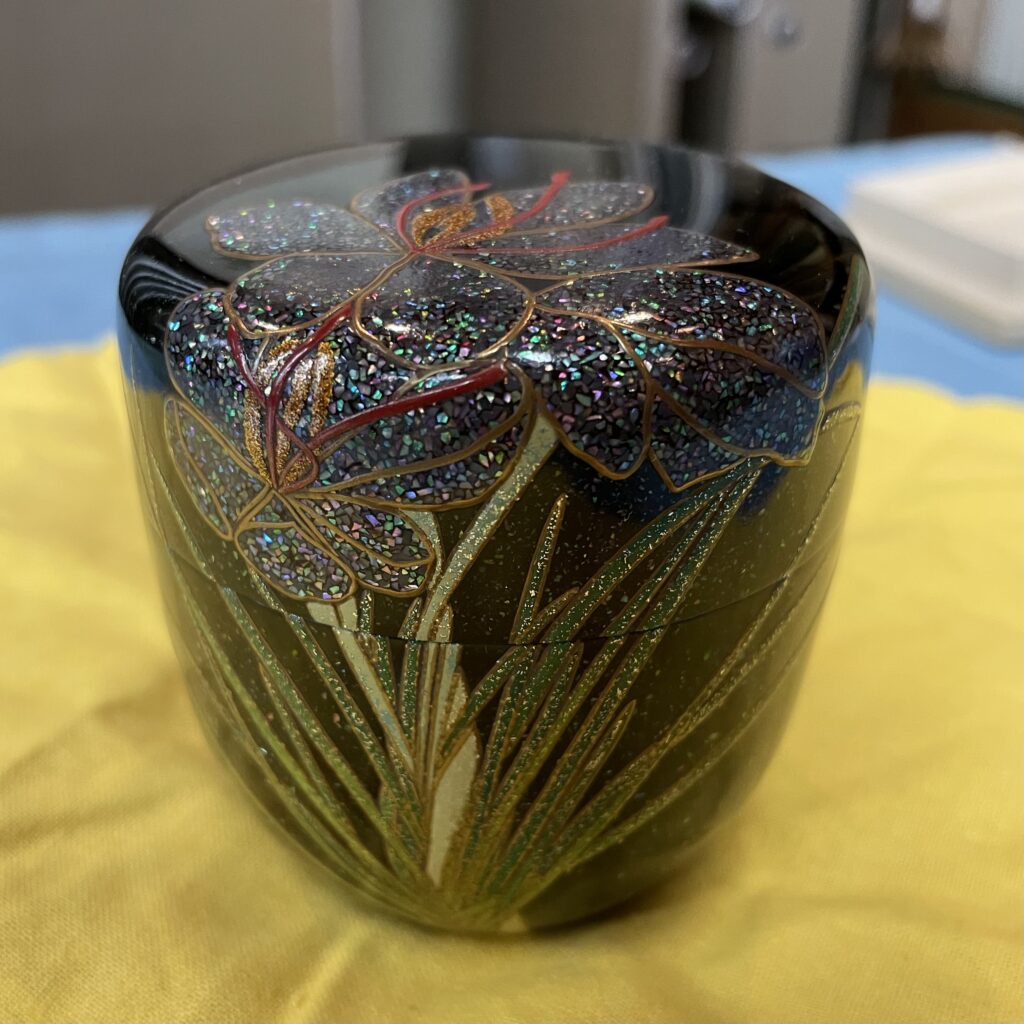
Making Japanese culture more accessible through works of art
Japanese and foreign clients frequent Fuji Torii, attracted by the beautiful art pieces and natural curiosity. Many are yearning to understand Japanese culture. She thinks one of the reasons for the shortfall of knowledge has to do with a lack of exposure to art during childhood. Japanese art must be made more accessible to the public in practical ways. Providing educational opportunities for people to experience art and supporting traditional craftsmen so that they can develop careers in traditional Japanese arts and crafts are two ways of bridging the gap. Fuji Torii also contributes to the effort by providing opportunities for people to touch Japanese traditional culture and crafts in practical ways on a regular basis, that is, as familiar objects in one’s daily life. Examples include the fusion of Japanese urushi lacquer ware with wine glasses and the use modern designs on urushi inden leather bookmarks.

To the younger generation
To those who would like to be an art dealer in the future, Mr. Ishibashi advises, “There is much to learn. Thorough research is important. But, at the same time, learning new things is the most enjoyable part of this job.” As an art dealer, curiosity and a desire for knowledge about art are essential. Mrs. Kurihara continues, “I want people to observe and appreciate many art and, if possible, touch them. Whether or not you can touch something depends on the situation and it might be difficult, but there are things you can learn and sense only by touch”, she said.
Fuji Torii is the longest-established business in Omotesando. Mrs. Kurihara and Mr. Ishibashi will continue to preserve Japanese art and connect it to future generations.

“Arrival of Saffron in Japan at Dejima Island. The Dutch East India Company, 17th Century.” by Sazanami Suzuki. Byōbu folding screen, iwa-enogu mineral pigments on gold leaf and pongee gold silk fabric. From The Akaito Art Collection, courtesy of Akaito Limited and sponsored by J. Ford & Son Foundation.
As with all the pieces having to do with Japanese saffron in The Akaito Art Collection, this is the only piece of its kind in existence.
In this rarest of masterpieces, Sazanami Suzuki brilliantly captures the historical moment that saffron first arrives on the shores of Japan. The trading ship responsible was of the Vereenigde Oostindische Compagnie (VOC or United East India Company, commonly known as the Dutch East India Company). Bearers in the column of traders carry saffron flowers, a small box of stigmas, and a large box of presumably corms (one bearer in blue; the other, green) to present to a daimyō (feudal lord) and his consort (bottom right).
From the lookout atop the mizzenmast to the daimyō seated ashore, each of the fifty characters in this meticulously painted screen wear different garments according to their respective labors and stations, perform different actions, and even express different personalities. Despite the many activities going on independently, Suzuki’s virtuosity in composition drives a windswept dynamic across the screen that begins behind the ship’s sails and sweeps along the parade of traders, which flow toward—and even past—the daimyō, who appears to find the odd goings on intriguing, even theatrical. Rather than tiring the observer, the vivid colors and buzz of activity draw one deeply into the historical moment, delighting the eye and captivating the imagination.
Thought to have taken place in 1641 at Dejima, a possibility exists that the event occurred even earlier during the period 1609 to 1639 in Hirado, prior to the explosion of the Portuguese from Japan and the relocation of the Company’s trading post from Hirado to Dejima. Though the exact year is uncertain, no doubt exists as to the time of year being late November to mid-December—the time when saffron plants bloom.
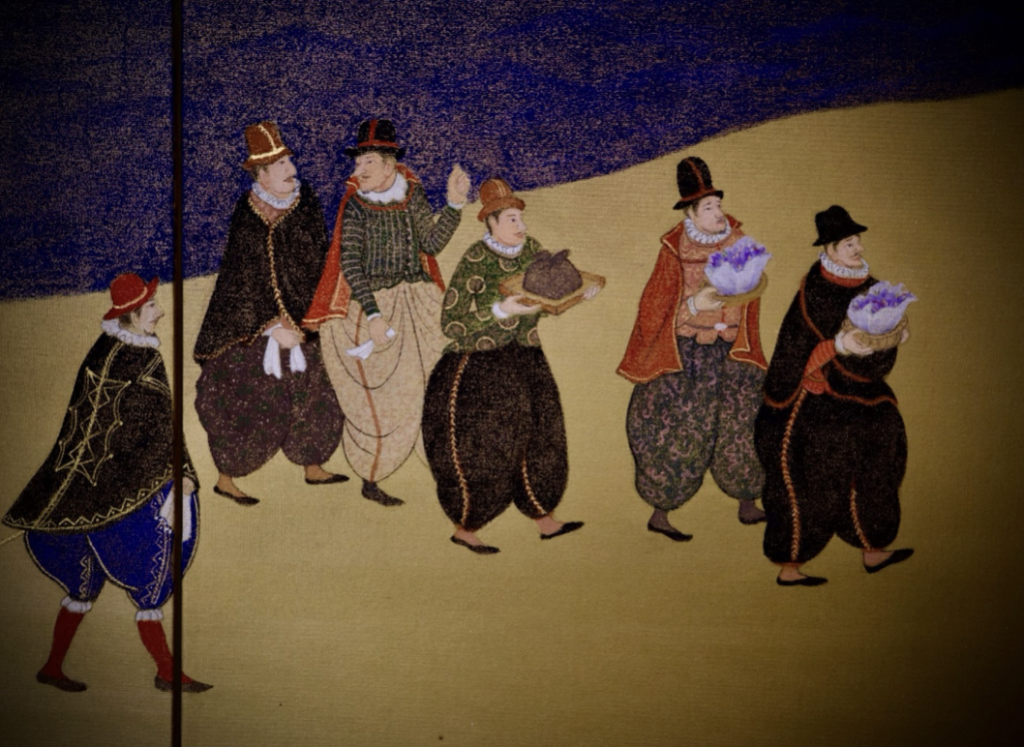
Fuji Torii Co. Ltd.
Founded in Omotesando, Harajuku in 1949. The name ‘Fuji Torii’ derives from the fact that, in the aftermath of WWII, the area was obliterated, but Mt. Fuji and the torii shrine gate of Meiji Jingu Shrine could still be clearly seen.
Website: http://www.fuji-torii.com/
Instagram: https://www.instagram.com/fujitorii/
6-1-10 Jingumae, Shibuya-ku, TOKYO. 150-0001
Telephone: 03-3400-2777 (+81 3 3400 2777)
Facsimile: 03-3400-5777 (+81 3 3400 5777)






